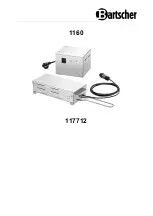
D150-03-00 REV: 001
1
I56-1030-000
INSTALLATION AND MAINTENANCE INSTRUCTIONS
Before Installing
Please thoroughly read the System Sensor manual I56-
407,
Guide for Proper Use of System Smoke Detectors
,
which provides detailed information on detector spacing,
placement, zoning, wiring, and special applications. Cop-
ies of this manual are available at no charge from System
Sensor. Please also refer to CAN/ULC-S524,
Standard for
the Installation of Fire Alarm Systems
and CEC Part 1,
Sec. 32.
NOTICE:
This manual should be left with the owner/user
of this equipment.
IMPORTANT:
The detector used with this base must
be tested and maintained regularly following ULC re-
quirements. The detector used with this base should be
cleaned at least once a year.
Specifications
Base Diameter:
6.2 inches (157 mm)
Base Height:
0.95 inches (24 mm)
Weight:
0.3 lb. (137 g)
Mounting:
4-inch square box with or without plaster ring. Min. depth–1.5 inches
3-1/2-inch octagon box. Min. depth–1.5 inches
Operating Temperature Range:
0° to 49°C (32° to 120°F)
Operating Humidity Range:
10% to 93% Relative Humidity, Noncondensing
Electrical Ratings - includes base and detector
System Voltage:
24 VDC
Maximum Ripple Voltage:
4 Volts peak-to-peak
Start-Up Capacitance:
0.02µF Maximum
Standby Ratings:
20 VDC Minimum
29 VDC Maximum
120 µA Maximum
Alarm Ratings:
17 mA Minimum
36 mA Maximum
Reset Voltage:
1.4 VDC Minimum
Reset Time:
0.3 Seconds Maximum
(The optional RA400ZA operates within specified detector alarm currents.)
Start-up Time:
34.0 Seconds Maximum
Relay Contact Ratings:
Resistive or Inductive (60% Power Factor)
Form A:
2.0 A @ 30 VAC/DC
Form C:
2.0 A @ 30 VAC/DC
0.6 A @ 110 VDC
1.0 A @ 125 VAC
General Description
The Model B112LPA detector base is designed for use with
System Sensor model 2151A photoelectronic and 1151A
ionization detector heads. This four-wire base is equipped
with screw terminals for the connection of power, ground,
and an optional remote annunciator.
Mounting
The detector base mounts directly to 3-1/2 inch and 4-inch
octagon boxes and 4-inch square boxes, with or without
plaster rings. To mount the base, remove the decorative
ring by rotating it in either direction to unhook the snaps
before separating the ring from the base. Use the screws
supplied with the junction box to attach the base to the box
through the appropriate slots in the base (see Figure 1).
Position the decorative ring around the base and rotate it
in either direction until the ring snaps into place.
B112LPA Plug-in Detector Base
For use with the following smoke detectors:
1151A Ionization
2151A Photoelectronic






















